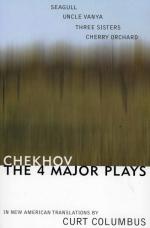|
This section contains 6,826 words (approx. 23 pages at 300 words per page) |

|
SOURCE: “Huntsmen, Birds, Forests, and Three Sisters,” in Chekhov's Great Plays: A Critical Anthology, edited by Jean-Pierre Barricelli, New York University Press, 1981, pp. 144-60.
In the following essay, Karlinsky discusses the images of hunting and the forest throughout Chekhov's work and points to its significance in The Three Sisters.
In describing the domestic arrangements of her parents at Yasnaya Polyana, Tolstoy's daughter Aleksandra emphasized the major role that dogs and horses played in their day-to-day existence.1 Few people who live in the twentieth century find themselves in such close proximity to such large numbers of these two domesticated species of animals. Those who have read Pushkin's “Count Nulin,” Gogol's Dead Souls, Turgenev's Sportsman's Sketches, Tolstoy's War and Peace and Anna Karenina, and almost anything by Aksakov will know that the pursuit on horseback of foxes, wolves, and hares, with the aid of large packs of hunting hounds, was...
|
This section contains 6,826 words (approx. 23 pages at 300 words per page) |

|


